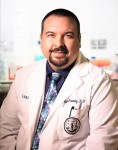Doctors to offer stem cell treatments – The News (subscription)
Dr. Ren Halverson can empathize with his patients. Like many of those who walk through his doors at Advanced Chiropractic in Brunswick, he has also experienced injuries and the pain they cause.
I had a torn labrum in my right shoulder, a torn rotator cuff in my left shoulder and and torn meniscus in my right knee. I already had two surgeries on my knees, he said. It was a daily challenge treating patients.
In order to help his patients and himself find relief, the chiropractor is always on the lookout for the latest in scientific health developments that might help. He spends countless hours studying the latest in medical innovations. Not too long ago, Halversons research paid off when he came across amniotic stem cells.
Of course, Halverson was already familiar with stem cells and the long term research concerning some for joint treatment. But the new data, methods and results were something he simply couldnt ignore.
World-wide the results with stem cells are off the charts. There are different types of stem cells ... blood marrow, which is best used for blood diseases. Amniotic, which is the membrane surrounding the placenta and is the safeguard between the mothers blood flow and the babys. That is what we are talking about here, he said. It has proven to be best for joint and tendon repair.
Amniotic arent, however, the same as the controversial fetal stem cells that gained so much attention over the past decade. Halverson says these types of stem cells raise no moral or ethical questions. They are also more effective than other types of stem cells in healing musklo-skeletal injuries.
These are offered by willing, cesarean donors. The FDA has approved the process and it is very strictly regulated. The hosts, the mothers who donate, are screened for all blood born pathogens before they are able to donate.
The regenerative field of medicine is something that has proven itself invaluable over the past few decades. It has convinced Halverson to open that door to his patients. After all, he has experienced the positive effects of the treatment first hand.
I wanted to try the stem cell treatment first. I did it about three months ago and the results are just incredible, he said, moving his arms to illustrate his range of motion.
It takes about eight months for the full effects to set in but Im swimming again. I couldnt do that before. In many cases worldwide, patients have been able to fully heal arthritic joints and tendons or cartilage tears without having to have surgery.
He feels the statistics truly speak for themselves. The company Halverson uses has conducted more than 100,000 similar treatments.
Stem cells contain Hyaluronic Acid which provides a scaffold for mesenchymal growth cells to begin the rebuilding process. They also contain natural anti inflammatory agents known as Cytokines.
Halverson says there is not one documented case of a side effect reported.
There has never been a negative reaction. Patient satisfaction is/over 98 percent ... thats just in the U.S. They are doing this heavily in Europe and Israel, he said. The results are unbelievable. Pre- and post -X-rays show remarkable results.
He will however bring on new faces who will run the expanded medical clinic.
Our medical director is Dr. Theresa Cezar, who is a great internist but has extensive experience in physical medicine. We also have Cynthia White who is our nurse practitioner. They are both excellent, he said. We have a really exceptional staff here.
In addition to the stem cell treatments, Halverson is offering an expanded line of medical services, designed to treat musklo-skeletal patients with a cutting edge integrated approach. Those include trigger point injections, state of the art spinal bracing, biomechanics as well as the regeneration therapy, which includes stem cell and Hormone Replacement Therapy.
Halverson is excited about the opportunity to bring these innovative techniques to the Golden Isles. He sees these treatments as a significant building blocks in the future of healthcare, a departure from relying on medication, dangerous opioids and other invasive options.
Ive experienced it and I know it works. Even Medicare says integration with medicine, chiropractic and therapies together are the wave of the future. We are combining what weve already been doing ... the chiropractic and rehabilitation to really take this to the next level, Halverson said.
Read more here:
Doctors to offer stem cell treatments - The News (subscription)


